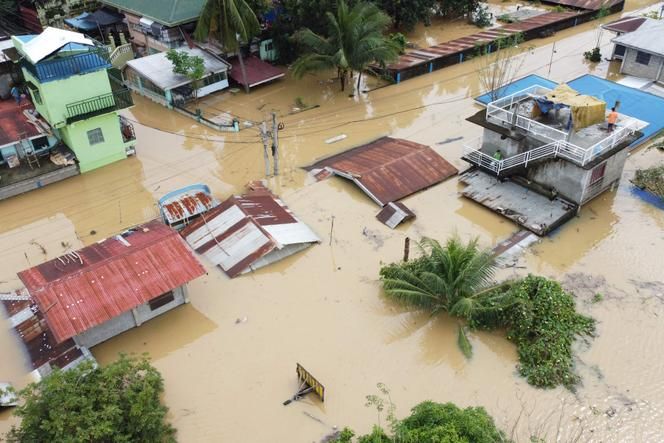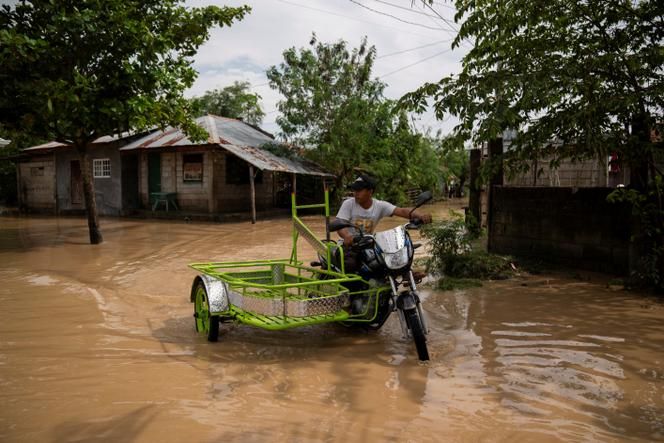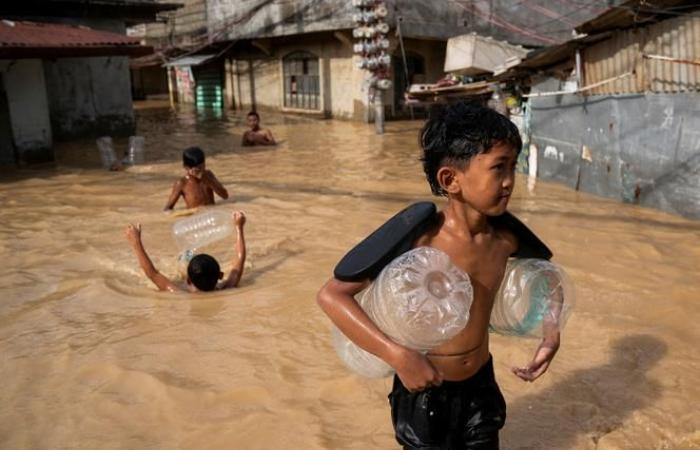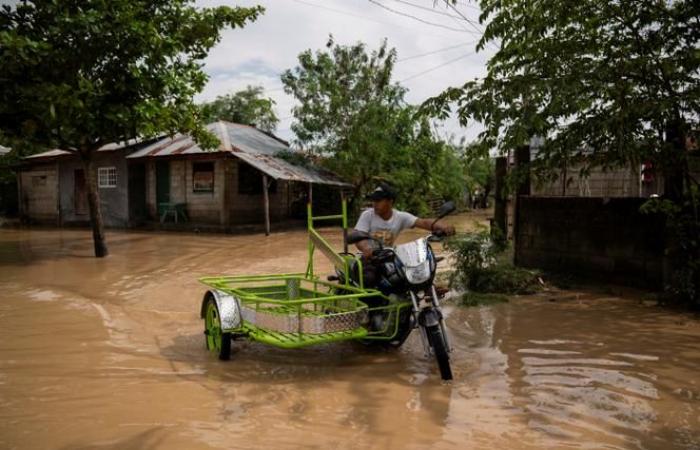Eight people died due to Typhoon Man-yi, which hit the Philippines on Sunday, November 18, including seven in a landslide in the north of the archipelago, according to Kristine Falcon, an official with the local disaster agency. disaster management.
The landslide, which also injured three people, occurred in the province of Nueva Vizcaya, north of Manila on the island of Luzon. A 79-year-old man also died in the province of Camarines Norte (east of Manila), after his motorcycle came into contact with a power line, according to police.
The National Weather Service had warned of the impact “potentially catastrophic” of Typhoon Man-yi which hit the Philippines on Sunday, but President Ferdinand Marcos Jr said on Monday that it “wasn’t as bad as we feared”according to an official transcript of his remarks provided to the media and consulted by Agence France-Presse (AFP).
Winds averaging 185 km/h, with gusts reaching 305 km/h, were recorded after Man-yi made landfall on Sunday afternoon in Aurora province on the island of Luzon.
It uprooted trees, brought down power lines, crushed wooden houses and triggered landslides. Hundreds of houses in the town of Ilagan, in Isabela province (northeast Luzon), were flooded on Monday following the release of water from a dam.


More than 1.2 million people have fled their homes
In the island province of Catanduanes, the typhoon toppled electricity poles, generating power outages that could last for months, Camille Gianan, the province's information officer, told AFP.
“We will now continue to rescue people who are in isolated areas”as well as those “who do not have the means to prepare their own meals and who do not have water available”declared the Philippine president. “Super typhoon” Man-yi was downgraded to the rank of typhoon on Sunday as it passed the island of Luzon, and is heading towards Vietnam on Monday.
Newsletter
“Human warmth”
How to face the climate challenge? Every week, our best articles on the subject
Register
More than 1.2 million people were forced to flee their homes as Man-yi approached, the sixth storm to hit the archipelago in the past month.
At least 171 people have died in the series of tropical storms that began in mid-October, leaving thousands homeless and destroying crops and livestock.
Every year, around 20 powerful storms and deadly typhoons hit the Philippines or its surrounding waters, but it is rare for several such events to occur in such a short time frame and this late in the year.
Scientists say climate change is increasing the intensity of storms, leading to heavier rains, flash floods and more violent gusts.










